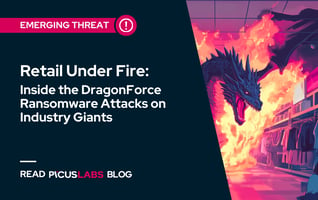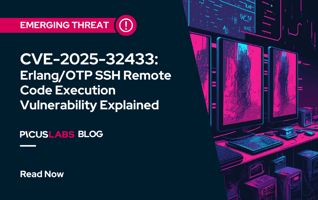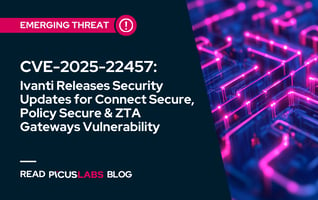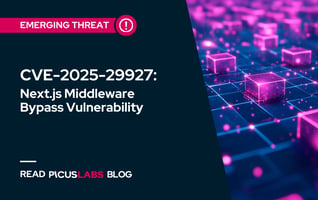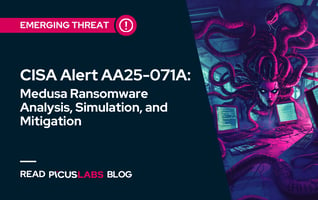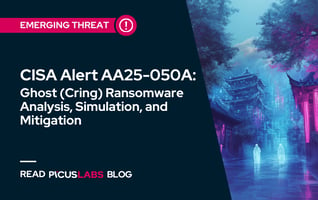451 Research: Continuous Security Validation
- Existing security measures are complex to manage and only scrutinize specific asset
- Continuous security validation provides continuous automated validation and testing
- Continuous validation allows a holistic view of cybersecurity investments, evaluating and optimising their efficacy on an ongoing basis and greatly improving scalability
To see the whole video, please click on the image above!
Introduction
I'm Aaron Sherill, senior research analyst at four five one research, where I cover information security. Because the threat landscape is so complex and dynamic, security technologies and techniques must continually evolve. And this is especially true for methodologies like pen testing and red teaming. Pen testing and red teaming exercises deliver unique benefits that are really difficult to match. They provide an adversarial perspective. They can be persuasive, goal oriented, and they produce immediately actionable findings. But these periodic point in time assessments do have some shortcomings.
“Continuous security validation enables the ability to take a holistic view of the entire security architecture”
Automation
For example, they're really only as good as the testers’ time and expertise, and they tend to only scrutinize specific assets. Now, pen testers and red teams, they're finding that leveraging automation and security validation controls can greatly augment their capabilities. Not only can it eliminate basic tasks, but continuous security validation enables the ability to take a holistic view of the entire security architecture and really the overall security effectiveness, measuring and optimizing the effectiveness of security controls on an ongoing basis so that security gaps can be uncovered as soon as they emerge and then quickly fixed. It also allows simultaneous testing of virtually all segments in an I.T. environment. It enables security teams to run unlimited simulations and ambulating a wide range of attacks based on the latest cybersecurity threats and do all this over a very short period of time. And they're able to generate reports and results instantly.
Problems with current measures
Now, the enterprise digital footprint is growing and evolving, becoming more disparate and more dispersed across hybrid cloud, multi cloud and on premise infrastructure and as a result is becoming more complex and difficult to protect against continually evolving threats. And the stack of siloed point security solutions that enterprises have deployed are often complex to manage and configure. And it really leaves security teams with either a false sense of security or uncertainty to their overall effectiveness.
“Security validation… increases the efficacy and scalability of existing cybersecurity investments.”
Benefits of continuous security validation
Enterprises are turning to continuous security validation tools to ensure that the measures they put in place are effective and working properly. Security validation helps enterprises reduce the risk of noncompliance and breaches. It optimizes security operations and increases the efficacy and scalability of existing cybersecurity investments. Security validation provides continuous automated testing and validation of an organization's security staff. It makes testing consistent and repeatable. It enables security teams to track and improve security scoring and assess the effectiveness of preventative, detective and pro-speech controls.Even a time limited use of security validation services can provide huge benefits. It gives security teams a boost by providing the data and context needed to bridge cybersecurity knowledge gaps. And it can help empower defensive capabilities by giving access to threat intelligence and data.
“And to do more testing across more threats, more frequently without automation? That’s gonna be a losing battle.”
What to look for in a continuous security validation platform
One of the main features or capabilities that’s vital for any security tool or platform is automation. We have executives, customers, partners, regulators - they're all pushing organizations into more frequent security control testing. And to do more testing across more threats, more frequently without automation? That's gonna be a losing battle. Security validation platforms must also provide actionable reporting and recommendations. You know, it's just not enough to point to where the problem is. It's really critical for these platforms to provide context and help organizations understand where to start. It's also important for a platform to be scalable, elastic and adaptable. Platforms should be able to evolve and keep pace with the volatility of the cloud in new and emerging threats. Also look for platforms that have a wide range of playbooks and simulation capabilities that are continuously updated. And then finally look for security validation platforms that have a wide range of prebuilt integrations. These integrations across SOC tools and SOAR platforms and ticketing systems. And we want that so we can enable full integration and visibility with the entire security operation stack and help empower a functional, effective and scalable security posture.
